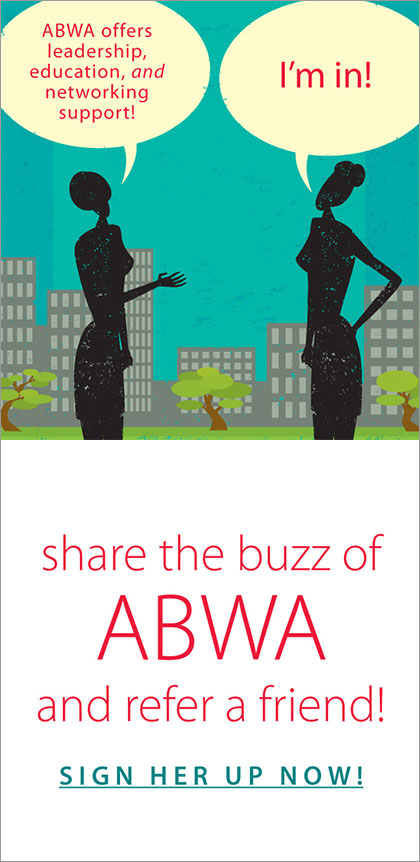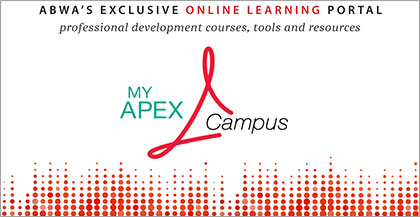
by American Business Women's Association | Sep 16, 2019 | Blog, news
ABOUT THE AUTHOR: Kate Zabriskie is the president of Business Training Works, Inc., a Maryland-based talent development firm. Kate and her team help businesses establish customer service strategies and train their people to live up to what’s promised.
Zombies in the workplace are soul-sucking, money-draining, productivity-killing entities that chip away at an organization’s spirit and its engagement levels one convert at a time. These creatures often look like the rest of us, but deep down they’re cancerous beasts that can potentially drive a business to ruin.So what’s a manager to do? Recognize the problem, know its source, understand why action is essential, and then do the work required to create a zombie-free workplace.
KNOWING YOUR ZOMBIES
Although zombies come in many varieties, most resemble one or more of the following:
- Negative zombies – Often the easiest to spot, they complain, moan, and express their dissatisfaction regularly. Some will use humor to disguise their disgust, but they are nevertheless contagious and a threat to the uninfected.
- Minimum-contributor zombies – They do the basics but nothing more. You will never see them looking for work or volunteering for projects. Furthermore, many act as if they are doing you a favor when you ask them to perform a task they get paid for doing.
- Status-quo zombies – These change-averse creatures dig in their heels and fight the future. They are happy with everything the way it is and take no initiative to implement new ideas. The most dangerous of this variety will even resort to sabotage if they feel threatened.
- Shortcut zombies – They find ways to cut corners and circumvent processes. Their choices frequently expose the organization to unneeded risk. Worse still, when these zombies are in charge of training others, they pass on bad habits and poor practices.
IDENTIFYING THE SOURCE
To rid an organization of zombies, you must understand how you got them. Each zombie has a creation story. These are the most common:
- The ready-made zombie story: People who were really zombies when someone interviewed them, and they got the job anyway.
- The we-did-it-here zombie story: Unlike the ready-made zombies, these zombies were created after they joined the organization. They were discouraged, taught to fear, or worse.
- The retired-on-the-job zombie story: These zombies should be long retired, but because of a need to complete a certain number of years of employment before receiving some financial reward or other benefit, they’re still in the workplace and just going through the motions.
- The abandoned zombie: Abandoned zombies are employees who could perform well if they didn’t feel as if they were the only ones who cared. After struggling alone, these poor creatures eventually succumbed and now just try to survive.
MAKING THE CHOICE BEFORE IT’S TOO LATE
When left unchecked, zombies can take over a department, division, or even an entire organization with relative ease. For that reason, it is essential that organizations are focused and vigilant in their approach to zombie management. Organizations that fail to take the problem seriously may find that it’s too late. To escape havoc when zombies gain a foothold, good employees will often leave for safer territory. Then, by the time management recognizes its predicament, a lot of talent has walked out the door, and what remains is not sufficient to do great work.
TAKING ACTION
Implementing an anti-zombie initiative is no easy task, but it can be done and done well if you take the process seriously and stay dedicated to invigorating your workforce.
Step 1
Be candid about your numbers. High turnover is a strong sign that there is a zombie problem. High absenteeism, poor output, and substandard financial performance are other clues. Think about what you would see if your organization were-zombie free and what numbers would be associated with that vision. Next, compare those statistics to the current reality and set some performance goals.
Step 2
Once you understand your global numbers, you should measure employee engagement. You can run a formal survey with a company that specializes in engagement or create one on your own. As with step one, the goal here is to get a sense of what’s working, what isn’t, and the breadth of your zombie problem.
Step 3
Next, ask yourself what are you seeing and hearing that you don’t want to see, and what are you not seeing and hearing that you do? After you know where the gaps are, think about solutions to address those shortcomings. If your zombies belong to the status-quo category, for example, consider putting in a process whereby everyone is tasked with finding two ways to improve his or her work processes or outputs. No matter what you choose, be sure you have the stamina to stick with the zombie-eradication tactics you implement. Fewer activities done well will beat a lot of mediocre ones every time.
Step 4
Be prepared to let go of those you can’t save. Despite best efforts, some zombies simply can’t be cured. If you’ve done all you can, and they’re still the walking dead or worse, it’s time to say goodbye. If the termination process in your organization is cumbersome and lengthy, at a minimum, you must protect the uninfected and recently cured from the zombie holdouts.
Step 5
Recognize success and coach for deficiencies. Saving zombies happens one employee at a time. People who are clear about expectations, receive proper training, get coaching when they miss the mark, and feel appreciated when they get it right or go above and beyond, are highly unlikely to enter or venture back into zombie territory.
ASK
- Do managers “walk the talk” and model anti-zombie behavior?
- Do employees understand how their work is connected to the organization’s goals? Can they explain that connection in a sentence or less?
- Are employees held accountable for following established processes and procedures?
- Do managers confront negativity?
- Do managers encourage and reward initiative?
- Do they meet one-on-one with their direct reports on a regular basis?
- Does a strong zombie pre-employment screening interview process exist?
- When good people leave, does someone conduct an exit interview to see if zombies are the reason for the departure?
The answers to those questions should serve as a starting point for encouraging engagement and avoiding everything from a small zombie outbreak to a full-blown apocalypse. You can never be too prepared.

by American Business Women's Association | Jul 17, 2019 | Blog
 Have you ever said something at work you wish you hadn’t? Sometimes the wrong words just blurt out to employees or with the client. The first step in fixing common communication blunders on the job is to know what those blunders are. Then you can say something the smart way and not the dumb way. Verbal communication expert, Greg Alcorn, CEO of Global Contact Services (GCS) of Salisbury, NC, is the author of 7 Dumb Things We All Say and speaks to thousands of people each year on improving verbal communication at work.
Have you ever said something at work you wish you hadn’t? Sometimes the wrong words just blurt out to employees or with the client. The first step in fixing common communication blunders on the job is to know what those blunders are. Then you can say something the smart way and not the dumb way. Verbal communication expert, Greg Alcorn, CEO of Global Contact Services (GCS) of Salisbury, NC, is the author of 7 Dumb Things We All Say and speaks to thousands of people each year on improving verbal communication at work.
BELOW, GREG HAS LISTED THE SEVEN BIGGEST BLUNDERS YOU MAY NOT HAVE USED, BUT HAVE DEFINITELY COME ACROSS!
ONE: Using Bad Bookends. The biggest blunder is starting and ending what you say with the wrong phrasing. Conversation bookends are the small comments or questions just before or right after a full statement or request for action. Be better with your starting and ending bookends. Pre-sentence bookends as a tool can be engaging, demeaning, or distracting. Names are great bookends. Starting a sentence with the name of the person you are talking to warms that person up. “Mary, may I put you on hold?” Saying your name last in your introduction makes it easy for the person you are talking with remember your name. “This is the help line; my name is Jack.”
TWO: Starting with Wrong First Words. Are you familiar with the adage, “Getting off on the wrong foot”? Conversations have first impressions, and they begin with your first three words. Hint: one of the words should be the other person’s name. Using names is important when speaking on the phone, especially conference calls. Conference call principle number one is if you’re going to call on somebody, start with the name. Instead of saying, “What were the metrics on our operations yesterday, Frank?” ask the right way: “Frank, what were the metrics on our operation yesterday?” If you don’t start with the name, you might catch the person by surprise. It certainly catches people’s attention when you say their name first.
THREE: Not Choosing Your Words Well. The words you choose paint a picture for the listener. Your words express your attitude and your personality. Keep it positive. Don’t start a sentence with the word “no.” Even in introductions, you can’t go wrong with saying the person’s name first. A person’s name followed by the four words “I need your help” is a winner. “Rachel, I need your help.” This is especially powerful when it’s in a situation in which you might be the boss and the other person might be a manager, or you might be in a perceived superior position.
FOUR: Poor Questions and Bad Listening. Meaningful questions always stay on subject, keep a conversation moving forward, and ensure the other person feels heard and understood. Becoming a better listener is easier than you might think. It starts by committing to be a great listener and making an active choice to listen. Ask good questions and really listen. This is the “You have two ears and one mouth” principle.
FIVE: Focus-on-Me Attitude. Making it all about you is a turn off for them. This is not a technique; this is an attitude. The best way to describe a benefit is to describe the feeling received. “I came by as soon as I heard you lost the sale; I’m sad.” The fellow employee can recognize the extra effort and surely appreciates the sentiment. It’s a powerful sentence. A special visit, a sense of urgency, and a sincere feeling (sad). Empathy shows feelings.
SIX: Wrong Tone. People feel more comfortable with pleasant, variable tone quality. Voice tone is made up of rate, pitch, and volume. Think tone and don’t drone. The tone of our voice helps others to hear our empathy. The rate, pitch, and volume of our statements of empathy helps express feelings. Usually, but not always, we hear implied empathy when somebody slows down speech and lowers the pitch and volume. Say, “I am sad to hear that you lost the supermarket account,” and I’ll bet you will automatically say it slow and low. The same with excitement at the opposite end of the spectrum. Say “Team, we won the hotel account!” You can’t help but say it fast, high, and loud. Tone expresses empathy.
SEVEN: Not Diffusing Difficult Drama. Stressful conversations, or drama, can be avoided by mastering word selection, listening, and questioning skills. Drama can be inevitable, however. Most stressful situations can be defused when you apply the three Rs: recognize, restate, and reassure. Ask others: “What would you like to see happen?” Those are seven magic words that can defuse difficult drama: Words are just a tool, like electricity is a tool. And like any tool, they can be used for helping or for harming. Electricity can cook a person’s dinner, or it can burn a person’s dinner. Words can turn people on or turn people off.
Here is the bottom line: Nobody wants to say dumb things. But we all do. The first step towards reducing the number of dumb things you say is to know what the dumb things are. Then don’t say that, say something smarter.

by American Business Women's Association | Jul 17, 2019 | Uncategorized
 Have you ever said something at work you wish you hadn’t? Sometimes the wrong words just blurt out to employees or with the client. The first step in fixing common communication blunders on the job is to know what those blunders are. Then you can say something the smart way and not the dumb way. Verbal communication expert, Greg Alcorn, CEO of Global Contact Services (GCS) of Salisbury, NC, is the author of 7 Dumb Things We All Say and speaks to thousands of people each year on improving verbal communication at work.
Have you ever said something at work you wish you hadn’t? Sometimes the wrong words just blurt out to employees or with the client. The first step in fixing common communication blunders on the job is to know what those blunders are. Then you can say something the smart way and not the dumb way. Verbal communication expert, Greg Alcorn, CEO of Global Contact Services (GCS) of Salisbury, NC, is the author of 7 Dumb Things We All Say and speaks to thousands of people each year on improving verbal communication at work.
HERE ARE THE SEVEN BIGGEST BLUNDERS YOU MAY NOT HAVE USED, BUT HAVE DEFINITELY COME ACROSS:
Using Bad Bookends. The biggest blunder is starting and ending what you say with the wrong phrasing. Conversation bookends are the small comments or questions just before or right after a full statement or request for action. Be better with your starting and ending bookends. Pre-sentence bookends as a tool can be engaging, demeaning, or distracting. Names are great bookends. Starting a sentence with the name of the person you are talking to warms that person up. “Mary, may I put you on hold?” Saying your name last in your introduction makes it easy for the person you are talking with remember your name. “This is the help line; my name is Jack.”
Starting with Wrong First Words. Are you familiar with the adage, “Getting off on the wrong foot”? Conversations have first impressions, and they begin with your first three words. Hint: one of the words should be the other person’s name. Using names is important when speaking on the phone, especially conference calls. Conference call principle number one is if you’re going to call on somebody, start with the name. Instead of saying, “What were the metrics on our operations yesterday, Frank?” ask the right way: “Frank, what were the metrics on our operation yesterday?” If you don’t start with the name, you might catch the person by surprise. It certainly catches people’s attention when you say their name first.
Not Choosing Your Words Well. The words you choose paint a picture for the listener. Your words express your attitude and your personality. Keep it positive. Don’t start a sentence with the word “no.” Even in introductions, you can’t go wrong with saying the person’s name first. A person’s name followed by the four words “I need your help” is a winner. “Rachel, I need your help.” This is especially powerful when it’s in a situation in which you might be the boss and the other person might be a manager, or you might be in a perceived superior position.
Poor Questions and Bad Listening. Meaningful questions always stay on subject, keep a conversation moving forward, and ensure the other person feels heard and understood. Becoming a better listener is easier than you might think. It starts by committing to be a great listener and making an active choice to listen. Ask good questions and really listen. This is the “You have two ears and one mouth” principle.
Focus-on-Me Attitude. Making it all about you is a turn off for them. This is not a technique; this is an attitude. The best way to describe a benefit is to describe the feeling received. “I came by as soon as I heard you lost the sale; I’m sad.” The fellow employee can recognize the extra effort and surely appreciates the sentiment. It’s a powerful sentence. A special visit, a sense of urgency, and a sincere feeling (sad). Empathy shows feelings.
Wrong Tone. People feel more comfortable with pleasant, variable tone quality. Voice tone is made up of rate, pitch, and volume. Think tone and don’t drone. The tone of our voice helps others to hear our empathy. The rate, pitch, and volume of our statements of empathy helps express feelings. Usually, but not always, we hear implied empathy when somebody slows down speech and lowers the pitch and volume. Say, “I am sad to hear that you lost the supermarket account,” and I’ll bet you will automatically say it slow and low. The same with excitement at the opposite end of the spectrum. Say “Team, we won the hotel account!” You can’t help but say it fast, high, and loud. Tone expresses empathy.
Not Diffusing Difficult Drama. Stressful conversations, or drama, can be avoided by mastering word selection, listening, and questioning skills. Drama can be inevitable, however. Most stressful situations can be defused when you apply the three Rs: recognize, restate, and reassure. Ask others: “What would you like to see happen?” Those are seven magic words that can defuse difficult drama: Words are just a tool, like electricity is a tool. And like any tool, they can be used for helping or for harming. Electricity can cook a person’s dinner, or it can burn a person’s dinner. Words can turn people on or turn people off.
Here is the bottom line: Nobody wants to say dumb things. But we all do. The first step towards reducing the number of dumb things you say is to know what the dumb things are. Then don’t say that, say something smarter.

by American Business Women's Association | Apr 22, 2019 | Blog
By Lisa Rangel
The executive recruiter calls with a job that sounds as if it was written just for you. The more the recruiter describes the position, the more excited you get. Then she ends the call with, “Great! Send me your resume and I’ll submit it to the company.”
Duh!!!
That’s the moment you realize that you haven’t updated your resume…What do you do?
Here are six actions you can take to update your executive resume pronto:
- Ask the recruiter what are the top three achievements the prospective employer wants the next hire to do. Next be sure you have measurable achievements listed that demonstrate how you either have done these accomplishments already or show how you are positioned to do these wins as next steps in your career. Speak to what the employer needs and what the recruiter says is important in the form of achievement-based bullets in your resume. Here are a few tips to do that include focusing on CAR or STAR formats. CAR stands for Context, Action, Result. The objective is to introduce a problem that you solved by providing the story behind it. STAR (Situation, Task, Action, Result) is similar in so far as you are also telling a story and highlighting how you are the hero in a situation: https://chameleonresumes.com/how-write-achievement-based-executive-resume-bullet/
- Make sure your contact information is updated. Current phone number (mobile) and email. You won’t need to include your physical address to send your resume to a third party recruiter in most cases. Be sure to include your LinkedIn profile vanity URL. Here are instructions on how to create your Vanity LinkedIn URL: https://www.linkedin.com/help/linkedin/answer/87/customizing-your-public-profile-url?lang=en
- Ensure the target position you just discussed with the recruiter is reflected in the title of your resume. Don’t start this summary section with the word “summary” or “objective.” Use the title as the title. This will visually reinforce to the reader that you want to do what they need.
- Freshen up the font. Gravitate towards a font more modern while still conveying an executive feel, such as Calibri or Arial Narrow.
- Update the visual element to your resume. Include subtle touches of color in the form of a separator line between sections. Refrain from using graphs and tables. Keep the layout simple, yet elegant, when doing your resume yourself.
- Employ the use of white space in your resume. Break up blocks of information and use short sentences with numeric- and results-driven content. Know that readers digest reading your resume in 6 second increments, so you want to write digestible morsels to keep them reading and motivated to call.
Ideally, you want to be ready with a resume BEFORE that recruiter call comes. But let’s face it, most of us will do it under pressure after the call comes. So these steps above will have you updating your resume and sending it over to the recruiter in no time! Also, remember companies that specialize in executive resume writing and consulting can be a big help when it comes to updating a resume quickly. You never have to do it alone.
ABOUT LISA RANGEL
Lisa Rangel, Founder and Managing Director of www.ChameleonResumes.com, LLC (a Forbes Top 100 Career Website), is a Certified Professional Resume Writer, Job Landing Consultant & 13-year Recruiter. She’s been featured on CNN Business, Fast Company, Business Insider, Forbes, LinkedIn, CNBC, Time Money, BBC, Newsweek, Crain’s New York, Chicago Tribune, eFinancialCareers, CIO Magazine, Monster, US News & World Report, Good Morning America, Fox Business News, New York Post, and other reputable media outlets.

by American Business Women's Association | Mar 24, 2019 | Blog
Written by Executive Leadership Coach, Denise Louise Jeffrey
Whether pushing for promotion, bargaining for extra budget or trying to convince a client to get on board, negotiation is a necessary part of business life. Most of us aren’t born with this skill, but it’s well worth taking the time to conquer for the benefits that it can bring – from forging better business relationships to reaping great rewards… whatever they may look like for you. With insight from Executive and Leadership Coach Denise Louise Jeffrey, here’s how to influence your way to great negotiations and seal the deal:
BE PREPARED…
One of the most important things to do when negotiating, is to put in the groundwork before anything begins. A common combination, and a vain one at that, is to be overconfident but under-prepared. Always take time to put the research in, and make sure you know what you’re getting yourself into. If you know who you’re meeting, carry out some background research, perhaps familiarizing yourself with their role and career trajectory. Also educate yourself on the project at hand, so that you’re well positioned to address any questions that may arise, and provide answers backed up by cold, hard facts.
BE ATTENTIVE…
Being attentive takes on many types of meaning in negotiations. No matter who you’re up against, always take the time to listen and show that you’re taking on board what they say. This is a two-way street, and there needs to be a mutual respect and understanding for what one another wants from the meeting. But being attentive also means being observant of their behavior, and as Denise suggests, you should use this to negotiate “with an outlook of achieving different outcomes that could be acceptable for all, depending on the style of bargaining your counterpart pursues.” Being able to pay attention to and, recognize their tactics, is key. This leads us onto the final step
BE ADAPTABLE…
As Denise tells us, negotiation isn’t a one-solution situation, and what works for one person may not work for the next. Being able to adapt based on your negotiator’s behavior is a key part in increasing your likelihood of success in the transaction. According to Denise, you can do this through noting their negotiation traits, which have been broken down into four archetypal types: The ‘My Way or the Highway’ type, the ‘Sweet Talker’ type, and the ‘Devil’s in the Details’ type and the ‘Let’s Not Rock the Boat’ type. The key is to then meet them on their level, unless – and this is one exception to the rule – they are being inappropriate or aggressive, in which case, call them out for their unprofessionalism and part ways. Denise’s recommended negotiation approaches are tailored to each category.
Ultimately, the most valuable skill a negotiator can possess is “being able to adapt and negotiate in all styles – not just the one you are most comfortable with.” Being prepared, attentive, altering your behavior based on theirs, and adapting accordingly on the day, is what will give you the highest chance of the best possible outcome.



 Have you ever said something at work you wish you hadn’t? Sometimes the wrong words just blurt out to employees or with the client. The first step in fixing common communication blunders on the job is to know what those blunders are. Then you can say something the smart way and not the dumb way. Verbal communication expert,
Have you ever said something at work you wish you hadn’t? Sometimes the wrong words just blurt out to employees or with the client. The first step in fixing common communication blunders on the job is to know what those blunders are. Then you can say something the smart way and not the dumb way. Verbal communication expert, 




